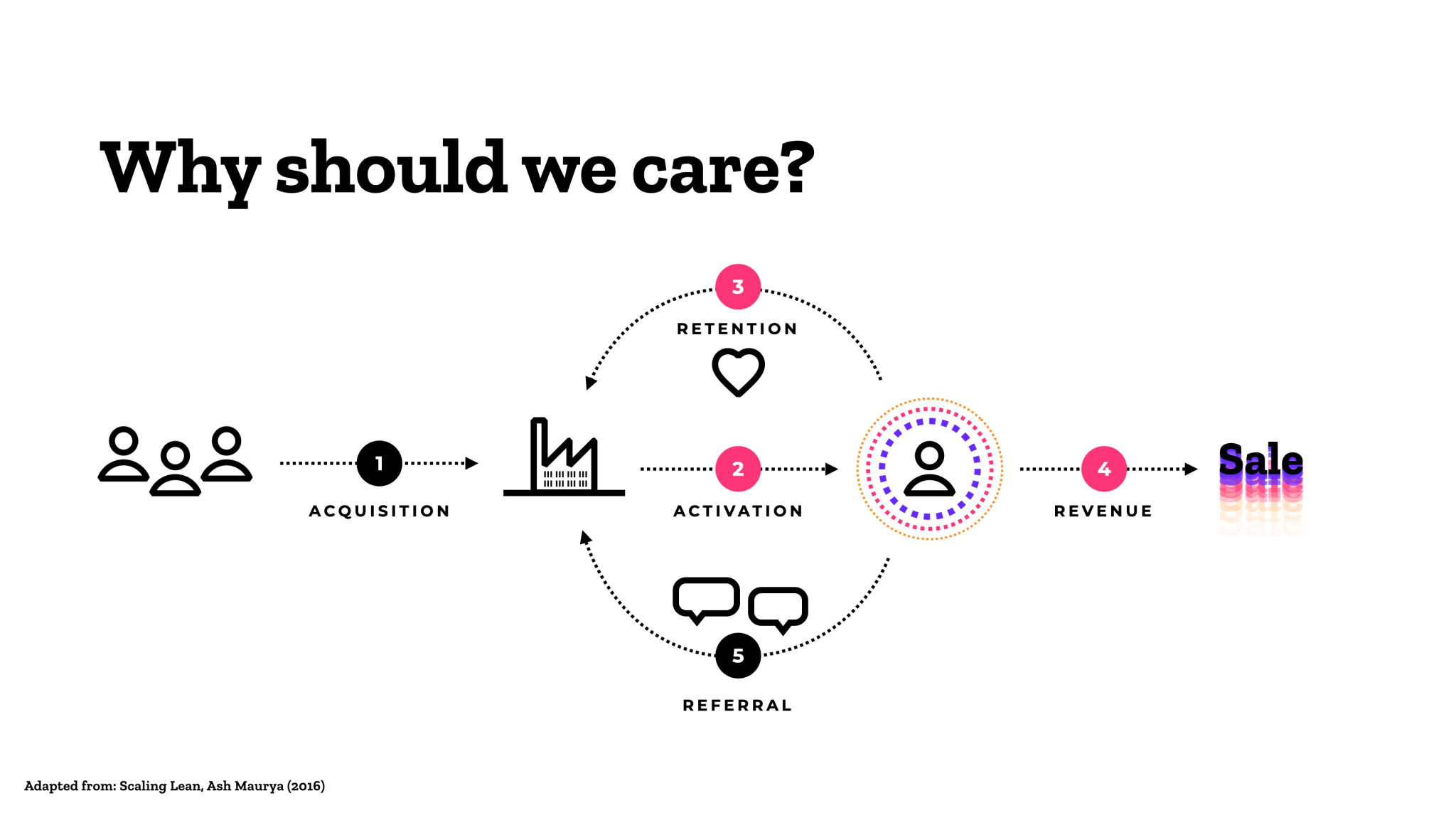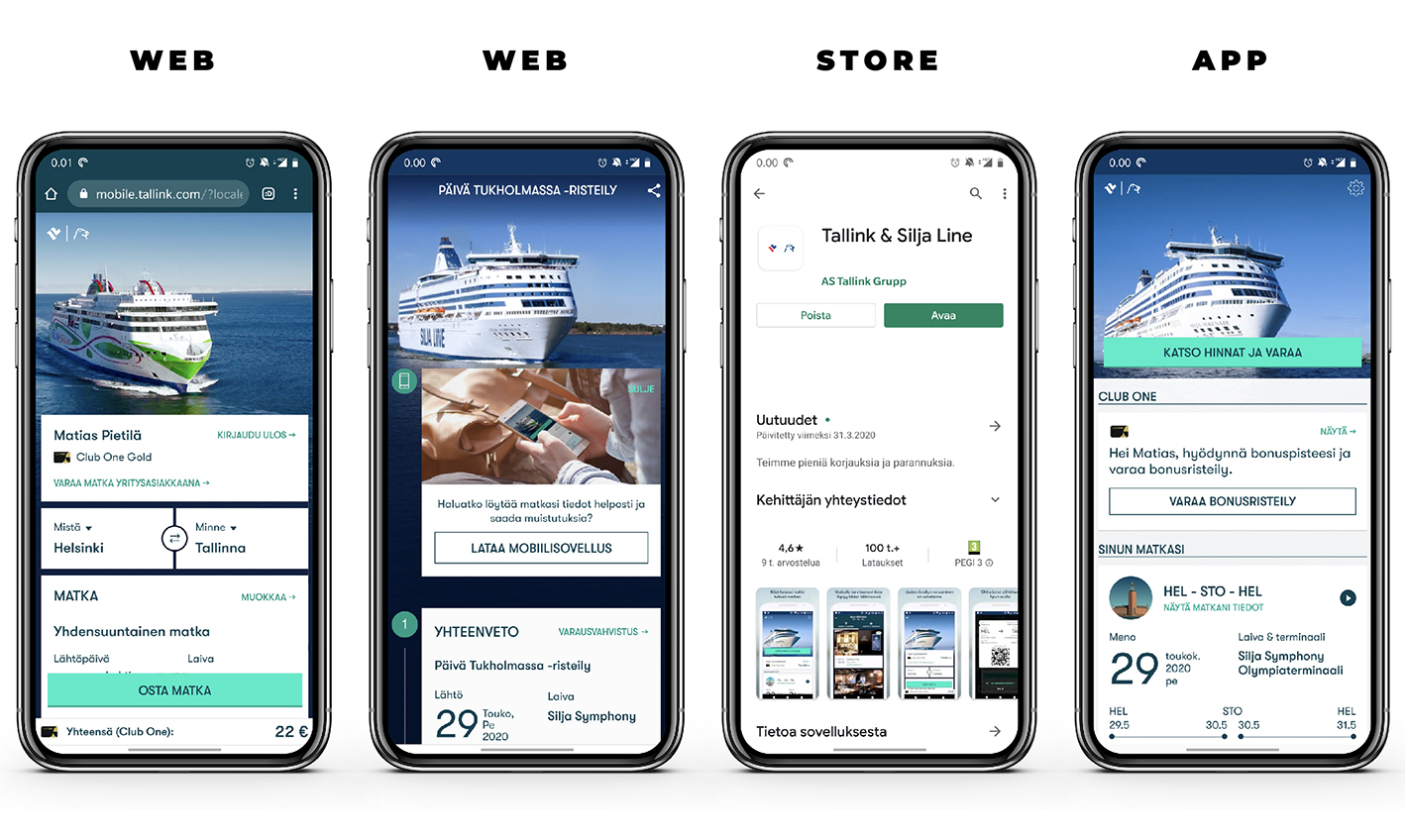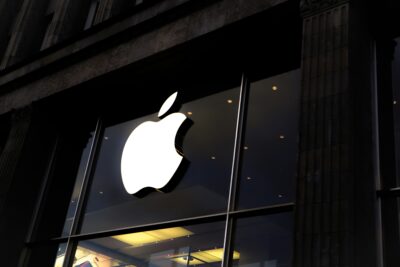
How to get into your customer’s phone and stay there? Part 1: Customer acquisition
Year in, year out, mobile applications are the best way to achieve customer loyalty. Apps account for more than 90 percent of web browsing on mobile devices. But getting into your customer's phone and keeping a foothold is really hard, and the competition is fierce.
Year in, year out, mobile applications are the best way to achieve customer loyalty. Apps account for more than 90 percent of web browsing on mobile devices. But getting into your customer’s phone and keeping a foothold is really hard, and the competition is fierce.
This article series presents a systematic approach to achieving success, fusing our own experiences and the mobile industry’s latest technological solutions with the ancient and hallowed tenets of service management.
The Customer Factory is a service lifecycle model presented by startup author Ash Maurya in his book Scaling Lean. It’s based on Dave McClure’s famous Pirate Metrics model that divides a product’s lifecycle into five stages:
1. Acquisition
2. Activation
3. Retention
4. Revenue
5. Referral

Customer Factory Model
Maurya’s version sees the service as a factory designed to produce satisfied customers. What’s more, the factory makes these happy customers come back to the service and recommend it to their networks. They also feel that the service is worth the price, because it resolves their needs.
The Customer Factory is a universal model that can be applied to any type of business, from flower shops to digital services with monthly subscriptions.
This series looks at the model from the perspective of mobile services in particular. Mobile apps have long since lost the status of technically fascinating novelties. Today, they are one channel among many and should be treated like any other business. Mobile applications nevertheless have many special features of which you should be aware.
Acquisition – how does the app fit into the service lifecycle?
“Nobody downloads apps any more”, they say. And that’s pretty much true. The worth of the mobile market breaks a new record every year, and 90 percent of mobile browsing happens in apps, but it can be difficult to get in on the action.
Statistics show that the average consumer downloads zero new apps per month. And yet mobile applications are such a great channel for customer loyalty and revenue, that it’s always worth a try. (Check out Qvik’s fresh summary of the mobile market’s growth and changes in customer behavior.)
The old adage that a mobile application is only the right solution for loyal users, rings true. App design should not start in a vacuum. Rather, you would do well to sketch out the app’s role in the customer’s path and the overall service lifecycle as accurately as possible: when will you tell customers about the app, and how? You should also make trying the app as easy as possible.
According to Maurya, the following aspects are critical in the Acquisition phase:
- Unique value proposition
- Demo
- Pricing
- Call to action
If you look at the typical ways of getting customers to download apps in this light, you will see that these needs are not being met very well at all. An annoying banner on the side of a website, somewhere next to the cookie banner, is a common way of enticing customers to download your application. No reason is usually given for downloading the app. The provider just assumes that having an app is a valuable thing in itself. This same phenomenon is also prevalent in app advertising over other channels.
An example of success
The solution we designed together with Tallink is one way of raising the subject in a considered way. If a user intends to quickly buy a trip from Helsinki to Tallinn, it’s no good trying to push an app on them. In the worst-case scenario, you will only distract them from the purchase. Your primary consideration should be to let them make a quick booking with the phone’s browser.

When the purchase has been made, the browser shows the user a summary of their coming trip. This timeline view is one of the application’s key features, so it also serves as a demonstration of the app’s functions (the demo). A card embedded in the timeline unobtrusively points out that it would be easy to take this timeline with you on the trip, if you just download our app, and reminds the customer of some essential information regarding their trip (value proposition and call to action).
Without going into the figures, I can tell you that a solution like this achieves significantly better conversion figures than your run-of-the-mill banner.
App store optimization is important – and completely in your hands
Applications are installed from the app store. That means one more step on the path of customer acquisition, and one more chance to fail. The app’s description, screenshots and possible videos should be attractive. They are a major part of your value proposition and completely under your control. And they don’t cost a cent!
Some users start looking for apps through the app store’s search function. To make it in this environment, you should pay attention to how your application is presented. This is where ASO, or App Store Optimization, comes in. It’s a related concept to SEO, or Search Engine Optimization, referring to measures for boosting the application’s search visibility.
Different stores also operate differently: Google Play e.g. automatically looks for keywords in the descriptions, while the App Store will only recognize specifically added keywords.
But the overall significance of ASO shouldn’t be exaggerated – if you have a familiar brand. When someone is looking for Ikea, they won’t download any other furniture store app just because it’s well optimized.
Keep your star ratings up
Star ratings and open feedback are also significant factors in users’ willingness to download an app. Studies have shown that when an app’s average rating drops below four stars, it can reduce download conversion by as much as fifty percent.
Ratings also affect the app’s visibility in the app store. So keeping your rating score up is important. There are two main ways of achieving this: 1) keep your product’s quality high; and 2) encourage satisfied users to leave feedback.
By itself, method number two is not much better than trying to carry water in a sieve. When your product is golden, have a look at our previously published article for concrete hints on activating satisfied users.
Both Google Play and the App Store offer administrators convenient tools for monitoring store page conversion. Google also enables handy comparisons to industry averages.
Paid marketing and using your own channels
Money also buys visibility, of course. Facebook, Google and company all offer their own advanced solutions for marketing applications, and service providers can specify exactly how much they want to pay for a single installation.
In his book, Maurya talks about engines of growth. If the engine runs on bought users, a magic formula says that customer lifetime value (CLV) should be at least three times the customer acquisition cost (CAC) to keep the business on a sustainable basis. Regrettably many companies do not have a clear picture of either metric, which hinders the systematic planning and metering of customer acquisition.
Regular multi-channel brands should not start acquiring customers for their apps with paid advertisements shotgunned around the internet, however. Using your own communications channels – both digital and physical – is much more effective. Tallink’s example of directing users to the application from your website is good practice. App ads on restaurant doors, various info screens and on the backs of tickets are also fine examples of putting owned media surfaces to good use.
Having your own customer service and sales force serve as ambassadors for your app is another important, yet often neglected channel.
Any paid ads should be targeted at customers who will obtain genuine benefit from the application, giving your company another chance to fulfil its value proposition. To continue with our example from the travel sector, you could target advertisements at customers who have already booked a trip.
App Clips and Instant Apps lower the installation threshold
Downloading an application can be a tricky process, which is why Google and Apple have been trying to simplify things lately. Google’s solution is called Instant Apps and has been available since 2017.
If the web browser directs a user to an Instant App link, and if the application is not installed on their phone yet, it will automatically download a lite version of the app, like loading a website. This enables an application-like user experience potentially richer than in the browser version. There is also a prominent button instructing the user to download the complete application. The download happens in context, without bouncing the user into the app store.
Instant Apps place specific requirements on the application, for example regarding its size, and has not gained very wide traction on the market. The Ilta-Sanomat tabloid’s implementation is the only one I have come across in Finland. You can watch a demo video of the Ilta-Sanomat’s Instant App implementation here.
App Clips is Apple’s 2020 response to the same need: how to let users enjoy the benefits of native features without the bother and commitment of downloading an app. Correspondingly, service providers are offered an easy way of getting users to try their apps.
Apple has taken its solution further than Google and integrated it with the real world. The app download can be triggered by an NFC tag or by scanning a QR-like code with the phone’s camera. If you feel like diving deeper, Qvik recently published an article on App Clips’ business opportunities and technical limitations.
Apple’s idea was to pare the process down to the bare essentials: no logins or asking for permissions, and payments are implemented directly with Apple Pay. App Clips have temporary permission to send push notifications and locate the user, and authentication is managed directly with Sign in with Apple.
The next instalment in this series will focus on the Activation phase. After you have put in the hard work and succeeded in persuading the user to download your app, how can you make sure that their first experience will be great?



